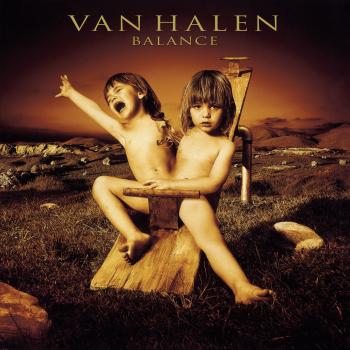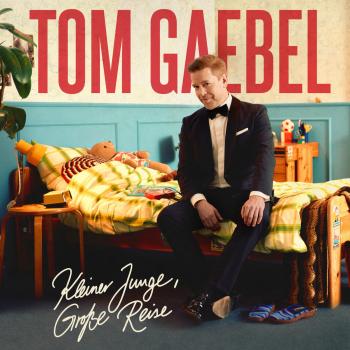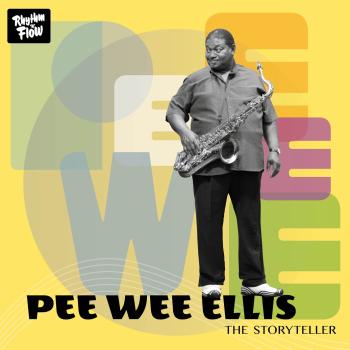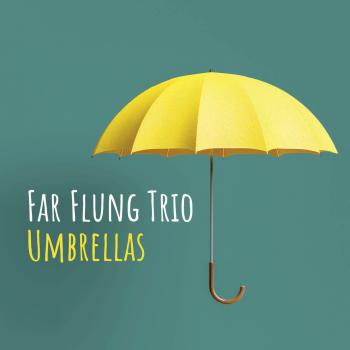
Groovy (Original Jazz Classics Series - Mono Remastered 2024) The Red Garland Trio, Paul Chambers, Art Taylor
Album info
Album-Release:
1957
HRA-Release:
26.04.2024
Album including Album cover Booklet (PDF)
I`m sorry!
Dear HIGHRESAUDIO Visitor,
due to territorial constraints and also different releases dates in each country you currently can`t purchase this album. We are updating our release dates twice a week. So, please feel free to check from time-to-time, if the album is available for your country.
We suggest, that you bookmark the album and use our Short List function.
Thank you for your understanding and patience.
Yours sincerely, HIGHRESAUDIO
- 1 C-Jam Blues (Remastered 2024) 08:24
- 2 Gone Again (Remastered 2024) 06:44
- 3 Will You Still Be Mine? (Remastered 2024) 04:41
- 4 Willow Weep For Me (Remastered 2024) 09:39
- 5 What Can I Say Dear? (Remastered 2024) 07:13
- 6 Hey Now (Remastered 2024) 03:36
Info for Groovy (Original Jazz Classics Series - Mono Remastered 2024)
Pianist Red Garland, the former boxer out of Texas who many would argue is still underrated (see his work, too, with Miles Davis and Sonny Rollins), is joined here by drummer Art Taylor and bassist Paul Chamber. This is the trio’s third album together, released in 1957. Bouncy and dexterous Groovy, sits firmly in the bebop and hard-bop genre.
“Over this uniquely compelling rhythm, Garland has constructed a blend of locked chord and single-note solo line style that retains all the essential warmth of melody and remains inventive,” DownBeat wrote. The album is also satisfyingly three-dimensional. Tracks such as the twinkling “Will You Still Be Mine?” telegraph pure joy, while you’d be hard-pressed to not get a little teary listening to “Gone Again,” a wistful, timeless ballad.
Red Garland, piano
Art Taylor, drums
Paul Chamber, double bass
Recorded at the Van Gelder Studio, Hackensack, New Jersey on December 14, 1956 and May 24 & August 9, 1957
Digitally remastered
Red Garland
William McKinley "Red" Garland, Jr. (May 13, 1923 – April 23, 1984) was an American modern jazz pianist. Known for his work as a bandleader and during the 1950s with Miles Davis, Garland helped popularize the block chord style of piano playing.
Early life
William "Red" Garland was born in 1923 in Dallas, Texas. He began his musical studies on the clarinet and alto saxophone but, in 1941, switched to the piano. Less than five years later, Garland joined a well-known trumpet player in the southwest - Hot Lips Page, playing with him until a tour ended in New York in March 1946. Having decided to stay in New York to find work, Art Blakey came across Garland playing at a small club, only to return the next night with Blakey's boss, Billy Eckstine.
Garland also had a short-lived career as a welterweight boxer in the 1940s. He fought more than 35 fights, one being an exhibition bout with Sugar Ray Robinson.
1946–54 Later life and career
After the Second World War, Garland performed with Billy Eckstine, Roy Eldridge, Coleman Hawkins, Charlie Parker, and Lester Young. He found steady work in the cities of Boston, New York City, and Philadelphia. In the late 1940s, he toured with Eddie Vinson at the same time that John Coltrane was in Vinson's band. His creativity and playing ability continued to improve, though he was still somewhat obscure. By the time he became a pianist for Miles Davis, he was influenced by Ahmad Jamal and Charlie Parker's pianist Walter Bishop.
1955–58 – Miles Davis Quintet
Garland became famous in 1954 when he joined the Miles Davis Quintet, featuring John Coltrane, Philly Joe Jones, and Paul Chambers. Davis was a fan of boxing and was impressed that Garland had boxed earlier in his life. Together, the group recorded their famous Prestige albums, Miles: The New Miles Davis Quintet (1954), Workin, Steamin', Cookin', and Relaxin'. Garland's style is prominent in these seminal recordings—evident in his distinctive chord voicings, his sophisticated accompaniment, and his musical references to Ahmad Jamal's style. Some observers dismissed Garland as a "cocktail" pianist, but Miles was pleased with his style, having urged Garland to absorb some of Jamal's lightness of touch and harmonics within his own approach.
Garland played on the first of Davis's many Columbia recordings, 'Round About Midnight (1957). Though he would continue playing with Miles, their relationship was beginning to deteriorate. By 1958, Garland and Jones had started to become more erratic in turning up for recordings and shows. He was eventually fired by Miles, but later returned to play on another jazz classic, Milestones. Davis was displeased when Garland quoted Davis's much earlier, and by then famous, solo from "Now's The Time" in block chords during the slower take of "Straight, No Chaser". Garland walked out of one of the sessions for Milestones, so that on the track "Sid's Ahead", Davis comped behind the saxophone solos.
1958–84 – After the Miles Davis Quintet
In 1958, Garland formed his own trio. Among the musicians the trio recorded with are Pepper Adams, Nat Adderley (Cannonball Adderley's brother), Ray Barretto, Kenny Burrell, Eddie "Lockjaw" Davis, Jimmy Heath, Harold Land, Philly Joe Jones, Blue Mitchell, Ira Sullivan, and Leroy Vinnegar. The trio also recorded as a quintet with John Coltrane and Donald Byrd. Altogether, Garland led 19 recording sessions while at Prestige Records and 25 sessions for Fantasy Records. He stopped playing professionally for a number of years in the 1960s when the popularity of rock music coincided with a substantial drop in the popularity of jazz.
Garland eventually returned to his native Texas in the 1970s to care for his aged mother. He led a recording in 1977, named Crossings, which reunited him with Philly Joe Jones, and he teamed up with world-class bassist Ron Carter. His later work tended to sound more modern and less polished than his better known recordings. He continued recording until his death from a heart attack on April 23, 1984 at the age of 60.
Playing style
Garland's trademark block chord technique, a commonly borrowed maneuver in jazz piano today, was unique and differed from the methods of earlier block chord pioneers such as George Shearing and Milt Buckner. Garland's block chords were constructed of three notes in the right hand and four in the left hand, with the right hand one octave above the left. Garland's left hand played four-note chords that simultaneously beat out the same exact rhythm as the right-hand melody played. But unlike George Shearing's block chord method, Garland's left-hand chords did not change positions or inversions until the next chord change occurred. It is also worth noting that Garland's four-note left-hand chord voicings frequently left out the roots of the chords, a chord style later associated with pianist Bill Evans.
Booklet for Groovy (Original Jazz Classics Series - Mono Remastered 2024)








